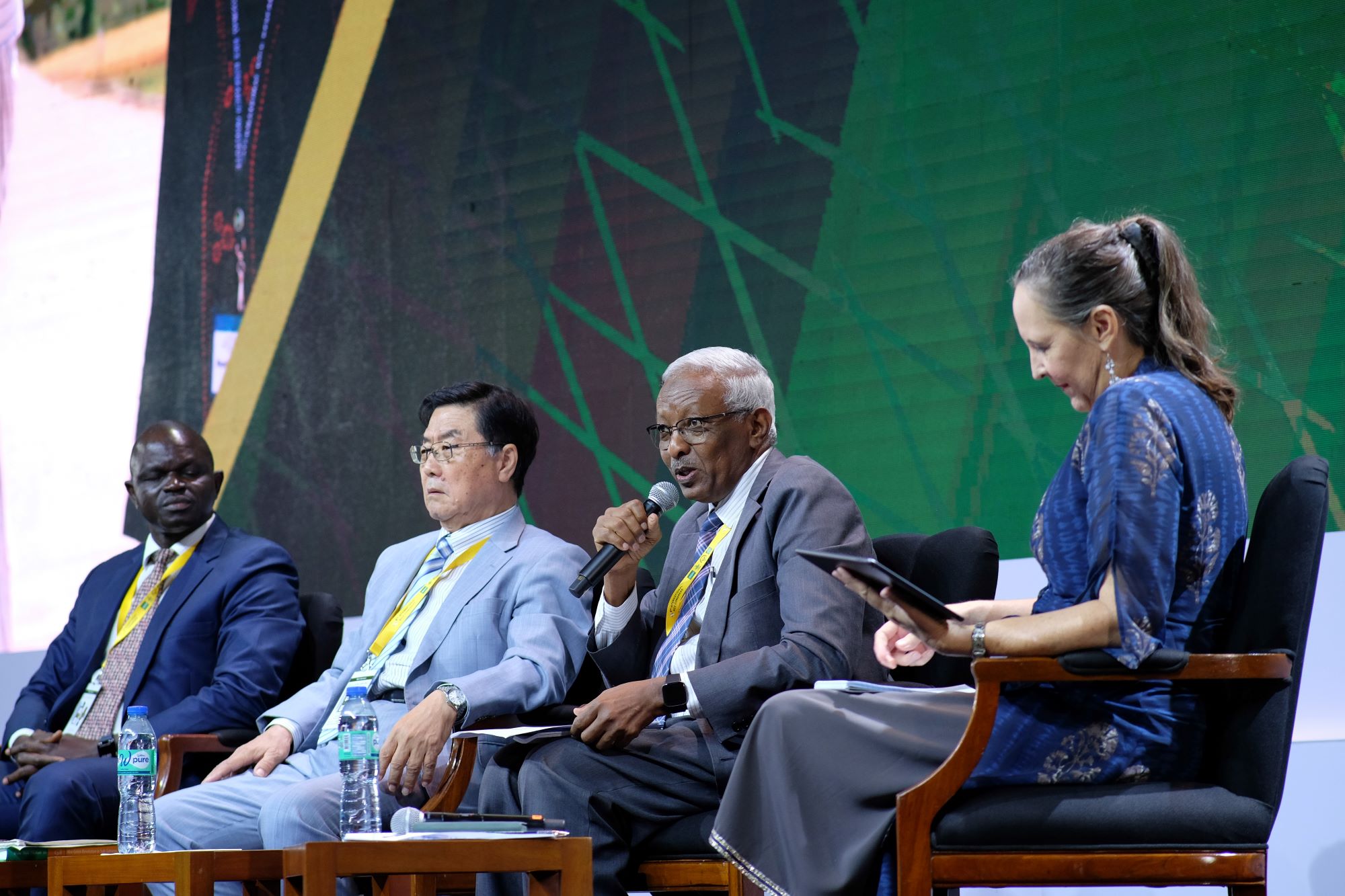From Asia to Africa: Building Africa’s Green Revolution on sustainable agricultural technology and practices developed in Asia

Manila, Philippines (23 October 2023) — The success of the Green Revolution technologies that transformed several rice-growing Asian countries from importers to exporters can be the foundation of Africa’s Green Revolution.
Rice is a promising cereal crop for Africa because the agricultural technologies developed for Asia under the Green Revolution have high transferability, according to Keijiro Otsuka, a professor of Development Economics at the Graduate School of Economics at Kobe University.

Dr.Otsuka, who co-authored An African Green Revolution with Donald F. Larson, laid out the pathway for transforming African agriculture from a subsistence model to a sustainable sector that improves the livelihoods of farming households and national growth at the recently held 6th International Rice Congress.
In the coming years, the African continent will continue to be at the center of climatic shocks as it experiences severe droughts, shorter rainy seasons, and increasing salinity. Rice-producing Asian countries can provide great support in the development of rice-based systems in Africa by providing knowledge, skills, and practices, which can, in turn, help the two continents achieve global self-sufficiency by 2030.
Dr. Otsuka, circling back to his point of scaling technologies from Asia, recounts observing African farmers in some areas during the harvest season bring knives to their rice fields every week because different tilled areas grow at different rates.
“Due to lack of leveling, some plants grow fast, some grow later,” he said.
There is evidence that extension programs effectively increased rice yields in the continent by making technologies available and helping farmers understand how these tools can help close rice yield gaps in the continent. Rice cultivation training programs also proved to be sustainable as participants were able to share their lessons with non-participants.
“There will be a need for a strong Asia-Africa partnership for the African Green Revolution to take place,” said Dr.Otsuka. “It needs to be examined beyond the lenses of the ‘seed-fertilizer revolution’.”

Africa's Green Revolution must be “management-intensive” which means attention must be provided to the proper management of soil, water, weeds, and rice plants to ensure increased profitability and productivity, according to him.
“We have to create a more welcoming environment for private sector partnership.” Baboucarr Manneh, Director General of the Africa Rice Center (AfricaRice), emphasized. “In the process of achieving rice self-sufficiency in the African continent, there are opportunities for investing in scaling high-impact technologies. But it has to be done sustainably.”
One of the problems Dr. Manneh identified was that only around 20% of the rice area in the continent is irrigated. AfricaRice is continually working on increasing its irrigation investments year by year to address this.

For his part, Director General of the Indian Council of Agricultural Research (ICAR) Dr. Himanshu Pathak proposes institutions and policies to focus on sustainable rice farming. As an example, he cited the Seeds Without Border Agreement as a move towards making an impact in global agricultural cooperation by having modern rice varieties shared across 10 consignatory countries from Asia. In this agreement, the International Rice Research Institute (IRRI) serves as a broker among the countries, enabling streamlined access to improved varieties that can help address the respective countries’ concerns on food and nutrition security in the face of climate change.
In the coming years, the African continent will continue to be at the center of climatic shocks as they experience severe droughts, shorter rainy seasons, and increasing salinity. Rice-producing Asian countries can provide great support in the development of rice-based systems in Africa by sharing knowledge, skills, and practices tailored to the needs of Africa's environments which can in turn help both regions achieve global self-sufficiency by 2030.